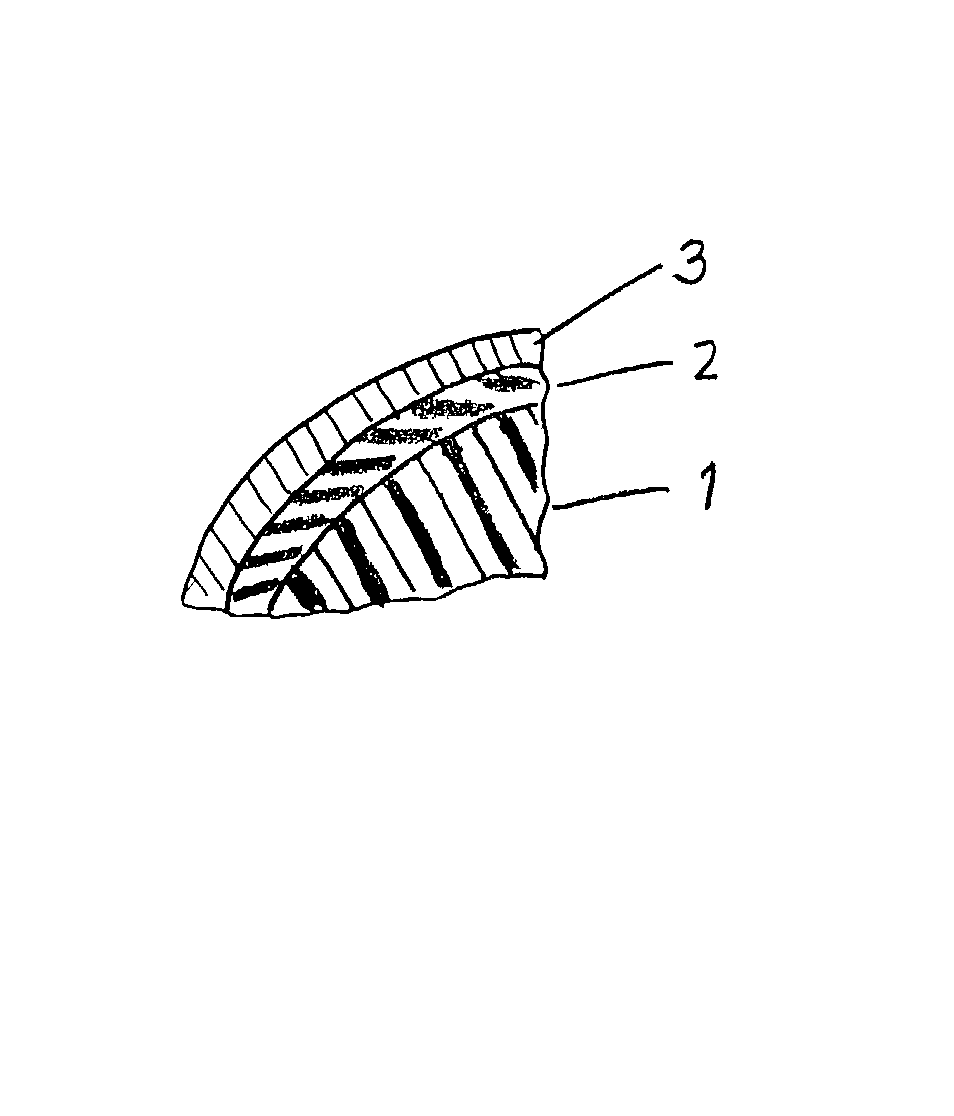Process for producing a chemical-resistant protective layer for a rotary body having a base body made from fiber-reinforced plastic
a technology of fiber reinforced plastic and protective layer, which is applied in the application, superimposed coating process, printing roller shell and other directions of the machine, can solve the problems of affecting the quality of the protective layer, the chemical resistance of the protective layer is not high, and the protective layer is not easy to deteriora
- Summary
- Abstract
- Description
- Claims
- Application Information
AI Technical Summary
Problems solved by technology
Method used
Image
Examples
Embodiment Construction
[0015] Referring to the FIGURE, a base body 1 is provided with an interlayer 2 and a functional layer 3.
[0016] The chemical resistant interlayer of hard rubber or thermoplastic can be applied in a thickness of from 160 .mu.m to 10,000 .mu.m, preferably from 500 .mu.m to 1000 .mu.m, NBR rubber coverings with a hardness of 40.degree.-80.degree. Shore D, preferably 80.degree. Shore D, advantageously being used for classic offset applications.
[0017] EPDM rubber coverings of the same thickness or Shore hardness are particularly suitable for offset applications using UV-curing inks. Polyamide (nylon) is suitable, as a widespread thermoplastic, for both offset applications. While in the case of thermoplastic in the form of polyamide the chemical resistant interlayer is produced using the fluidized bed process with metal or ceramic particles being added at approx. 120.degree. C.-140.degree. C., in the case of the rubber coating the metal or ceramic particles have to be admixed, for example ...
PUM
| Property | Measurement | Unit |
|---|---|---|
| thickness | aaaaa | aaaaa |
| thickness | aaaaa | aaaaa |
| thickness | aaaaa | aaaaa |
Abstract
Description
Claims
Application Information
 Login to View More
Login to View More - R&D
- Intellectual Property
- Life Sciences
- Materials
- Tech Scout
- Unparalleled Data Quality
- Higher Quality Content
- 60% Fewer Hallucinations
Browse by: Latest US Patents, China's latest patents, Technical Efficacy Thesaurus, Application Domain, Technology Topic, Popular Technical Reports.
© 2025 PatSnap. All rights reserved.Legal|Privacy policy|Modern Slavery Act Transparency Statement|Sitemap|About US| Contact US: help@patsnap.com


